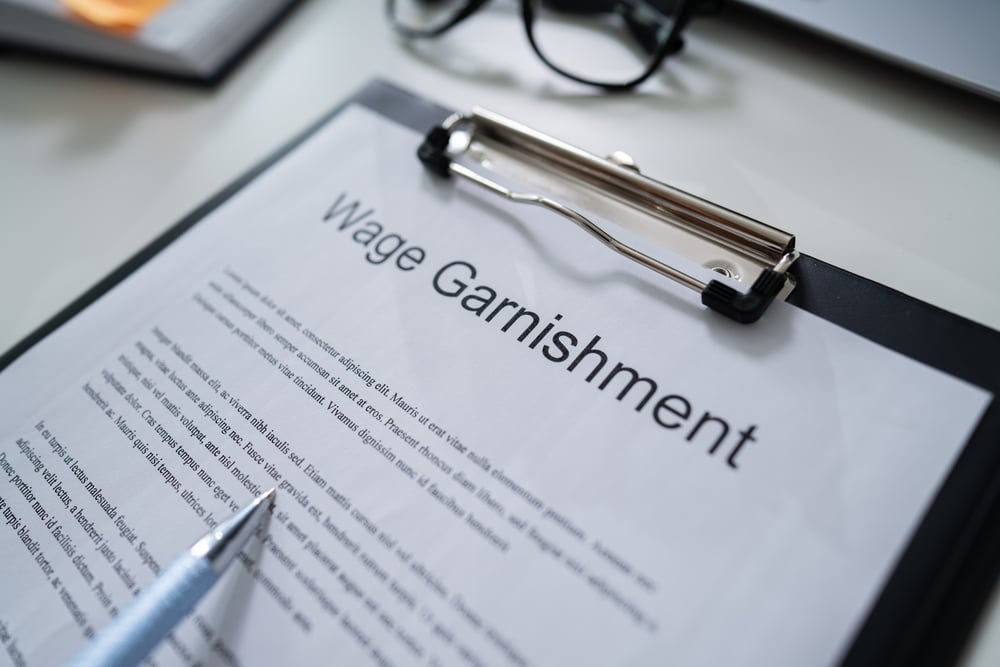
Ways To Stop Irs Wage Garnishment
September 14, 2022Wage Garnishment is a common practice used by the IRS to recover money from the people who owe a tax debt to the IRS. But, instead of garnishing wages right away, the IRS generally sends several notices called, the ‘IRS Collection Notice Stream’ to the debtor. If no suitable action is taken from the debtor’s side, they receive a Final Notice of Intent to levy before getting their wages garnished.
During the course of a IRS wage garnishment, the debtor’s employer is bound to directly send a portion of the debtor’s paycheck to the IRS on every pay period. This often makes it difficult for people with tax debt to maintain their financial stability and manage their expenses. In some cases, the wage garnishment can result in almost 70% of the debtor’s income getting withheld. This makes it obvious why every person experiencing wage garnishment wants to get rid of it as early as possible.
There are multiple ways to deal with the wage garnishment by the irs tax professionals. The most unreliable and not-so-recommended method being, changing one’s employer. This method is just a temporary fix since the IRS will eventually track down the debtor’s new employer, and the wage garnishment will resume again. Therefore, let’s have a look at some of the reliable ways to deal with wage garnishment.
Table of Contents
Pay Off Your Tax Debt In One Go
Paying off the entire debt amount to the IRS in a single transaction is the simplest and fastest method of the lot. There are high chances that you might have missed the notices sent by the IRS and had to experience wage garnishment. Therefore, if you can afford to pay off the entire amount in one go, you can do so via different mediums like money order, credit card, debit card, or a simple bank transaction. If the amount is bigger than the money you can pay off, you can also consider liquidating or selling an asset if possible.
Set up a Payment Plan
The first option might be the simplest of the lot, but it is not always the easiest for a lot of people out there. In such cases, setting up a payment plan to pay off the entire debt amount in installments can be the second most reliable option. To set up a payment plan, you just need to reach out to the IRS with a request regarding the same. With an agreement from the IRS, you can take up to 6 years to pay off your entire debt amount by making monthly payments of a fixed amount. This can ensure a constant reduction in the debt amount while also reducing the financial burden of wage garnishment.
Declare Hardship
Declaring financial hardship in front of the IRS can temporarily take the budget of wage garnishments off your shoulders. As per the IRS, financial hardships are situations where a person is finding it very hard to meet basic and reasonable expenses. Therefore, in order to declare a hardship, you will need to provide the IRS with appropriate proofs like financial statements and documents to convince them about your situation.
If the IRS finds your request to be valid, you will qualify for the ‘Currently Not Collectible’ status, and the IRS will stop garnishing your wages until your financial situation improves.
Settle the Debt For A Lesser Amount

You can negotiate with the IRS to pay an amount lesser than what you owe, and the remaining amount will be forgiven by the IRS. To choose this method, you will have to visit the website of the IRS and complete the Offer-In-Compromise (OIC) pre-qualifier, and check whether or not you are eligible to settle your debt.
One thing to keep in mind is that you should file all your tax returns before the IRS permits you to settle for a lesser amount. To be able to settle with an OIC, you must assure the IRS that you are unable to pay off the entire debt to them. Additionally, this process demands you to include at least 20 percent of your proposed amount as a down payment along with the application. The good news is, your wage garnishment is put on hold till the time your application is under review.
Declare Bankruptcy
Declaring bankruptcy must be a person’s last resort in order to escape wage garnishment, since, it calls for a drastic hit to their credit score and can be a huge obstacle for them if they intend to borrow money in the future. However, declaring bankruptcy sets the debtor free from the dischargeable tax debt whereas they will still need to pay back the non-dischargeable tax debt even after filing bankruptcy.
In order to file for bankruptcy, a person needs to communicate with the IRS and present all the required proofs before them. According to the IRS, a person should file all of their tax returns for tax periods that will be concluded within four years of the date of declaration of bankruptcy. Alongside this, they should also keep on filing and paying all the current taxes regularly.
While the above-mentioned methods can be a reliable way to deal with wage garnishments, it is common to have an air of confusion as to which method might be the most suitable one for you. In such cases, it is advisable to reach out to a certified tax professional. Having experience in dealing with similar scenarios over the years, a tax professional can easily choose which method will be the most suitable for your situation, and will also guide you throughout the whole process.











